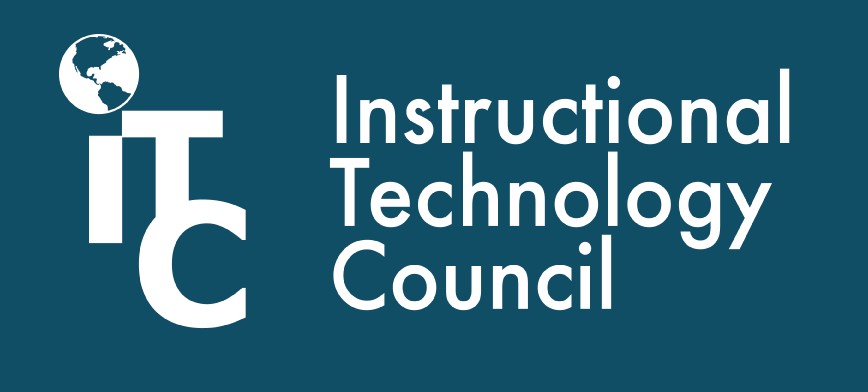Near the end of the last millennium, 1996 to 1998 to be exact, I was the administrator primarily responsible for developing the infrastructure necessary for videoconferencing (also known as interactive television or iTV) between classrooms on different campuses of a large metropolitan university. Today, you can do things from your cellphone that we couldn’t do in the 1990s with a million-dollar setup.
But what really shocked me back then was how quickly a selling point — the ability to videotape lessons and make the tapes available in the library to students who missed class — became a bone of contention. Faculty were worried that the university would use those recordings to “teach” the course in the future, putting the faculty member out of a job!
Although this never happened, we did have to make special arrangements to guarantee that any recording was under the direct control of the instructor and was either destroyed or returned to them within a specified timeframe.
FERPA: New technology, new concerns
Today, at a mid-size suburban community college, I wrangle three different videoconferencing platforms, two of which are bundled “for free” with other licensed software packages. Faculty seem to be constantly recording their classes, and now I’m the one worried about it! I’ve heard that the three most important things in real estate are: location, location and location; my three biggest concerns with recording faculty and students are certainly FERPA, FERPA and FERPA.
This article is part of a biweekly series provided by the Instructional Technology Council, an affiliated council of the American Association of Community Colleges.
However unlikely, it’s within the realm of possibility that education records could be disclosed within a class and that would be a clear FERPA violation. Sharing a video of that disclosure would compound the issue. Education records include, but are not limited to, grades, class lists, course schedules etc. Unlikely to come up in public discussion, but not impossible. Much more likely is that directory information such as student names would be disclosed.
For those of you who are FERPA gurus, you may wonder about a student’s privilege to opt out of directory information disclosures. The good news is that a student may not opt out of the disclosure of their name, electronic identifier or college email address in a class for which they registered. The problem with video recording a class is that some of our faculty members want to share a recording made in one course with students in a different course. Although the faculty have good intentions, doing that would potentially expose a class roster or course schedule (which are indeed education records) and even disclosing directory information in a course where a student isn’t registered could be a problem if that student had used the opt-out privilege.
The best recommendation is to not only require all faculty to have FERPA training but also have documented institutional policies and procedures governing the sharing of course videos. Sharing videos may still be a realistic and valuable option, depending on the features and settings of the videoconferencing software. For example, one vendor indicates that you can “remove identifying information” and “anonymize chat recordings” in their product, and it’s likely that many, if not all, other vendors offer similar options. Overall, if students and student information are not shown or disclosed in any way, I’d be less concerned.
Cost of storage
Not as tricky as FERPA, and certainly easy to solve by just writing an enormous check to the cloud storage vendor of your choice, is the issue of storage space. One minute of 4K video can consume around 350MB of storage or 243 old-fashioned floppy disks. So, if you’re planning to keep videos around for several semesters, be prepared to spend a pretty penny.
I said paying vendors is easy, but that’s only true if you have the funds in your budget. Lacking unlimited funding, you should have well-documented and publicized video retention procedures. Not fair: unexpectedly deleting videos faculty need for their courses. Totally fair: regular and anticipated deletion of videos as per a well-advertised procedure after notice has been given.
Inappropriate or unauthorized use
We have all seen or heard recordings of public figures doing or saying things that they wish we hadn’t seen or heard. I’d love to one day see a graduate of my college running for president, and I’d hate to see their campaign derailed by a class video where they expressed an opinion totally appropriate for an open educational environment of inquiry but not necessarily popular for a public figure running for office. The best we can do for our students and faculty is make sure they are aware of the risks and that they know how to use the appropriate security tools in any video-sharing product.
There are often sharing options that can help protect our users:
- Private/restricted, where the content owner can specifically identify people with a username and password to access the video.
- Unlisted/confidential, where anyone can access the recording but only if they have the specific URL
- Public which is, well, public.
These are just three common options. As always, the very best thing we can do to protect our students is to make sure that good practices for sharing classroom video are well documented and disseminated through regular professional development opportunities.
Remember ADA/accessibility
This goes without saying, but I’m going to say it anyway, your institution should already have a well-documented, well-publicized ADA compliance policy, and provide support and professional development as necessary to keep your college compliant with applicable laws.
The bottom line
So even for a somewhat paranoid administrator like me, it’s not should we/shouldn’t we record and share classroom video. We should! The question is, how do we do it well? The topics above touch on some of the most obvious issues, so you can take steps to avoid problems. You may find other issues as you head down this rabbit hole. But just as I suggested to faculty in 1998, making a recording of a lesson available to students can be a very good thing.






